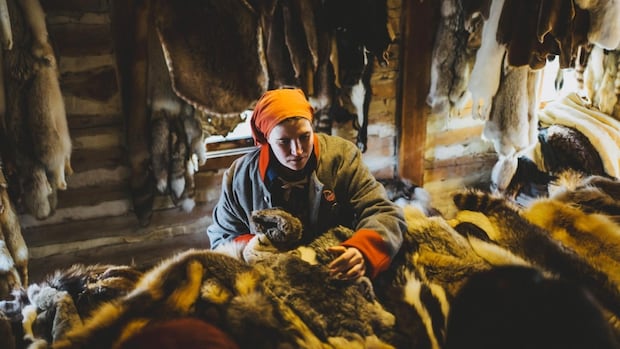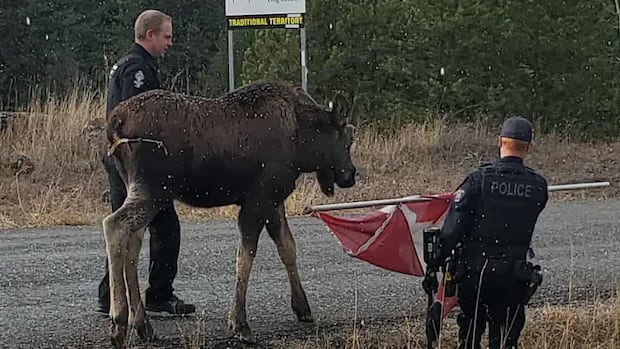A thief scaled the tall wooden gates surrounding a national historic site in Winnipeg’s St. Boniface neighbourhood this week and made off with thousands of dollars in furs used in public demonstrations of what life might’ve been like at fur trading posts 200 years ago.
About 140 pelts are gone from the Fort Gibraltar trading post log cabin, which falls within the high fort walls in Whittier Park, according to Festival du Voyageur’s executive director.
“It’s pretty clear that whoever came into the fort, they had one goal,” said Breanne Lavallee-Heckert.
“It was very clearly targeted toward the pelts…. There’s resale value there potentially. It is obviously a large, large quantity to take so I wouldn’t be thinking that someone is taking some just to fix their moccasins.”
Hundreds of pounds of furs were stolen during the heist on Monday. To get them out would’ve required scaling the fort fence, possibly using a ladder, Lavallee-Heckert said.
The thief or thieves broke a window to get into the trading post cabin. Festival du Voyageur has filed a police report over what Lavallee-Heckert says is thousands of dollars in lost furs used for educational programming.
They came from coyotes, foxes, bears, lynx, mink, muskrat and more — including 45 beaver pelts.
The items represent 50 to 75 per cent of Festival du Voyageur’s collection. Each contains distinct festival markings, like the letters F-D-V initials for Festival du Voyageur, and the festival logo.
Fort Gibraltar was an outpost founded by the North West Company in 1809, where the Red and Assiniboine rivers meet at The Forks in Winnipeg.
In the early days it was staffed by voyageurs, canoe guides, interpreters, traders and others trading furs and goods.
European fixation with beaver-skin fashion just about drove the beaver extinct in the 17th century. That in turn propelled the colonization of North America in search for more furs.
The fort was an important hub for trading with local Indigenous communities that provided a lifeline. In exchange for foods, they traded pemmican — a dried meat often consisting of bison pounded to a pulp and mixed with fat and sometimes berries — that was shipped to remote trading posts and caches.
The Hudson Bay Company was also growing its workforce of trappers and traders at this time.
Rivals HBC and NWC frequently got into conflicts that turned violent during a period dubbed The Pemmican Wars, which included the Battle of Seven Oaks in 1816 that played a crucial role in Métis people obtaining free trade rights.

The feuding was spurred in part by a fight for control and access to the food voyageurs depended on, pemmican.
In 1970, the first Festival du Voyageur took place as a celebration of Francophone, Métis and First Nation heritage in Manitoba.
Eight years later, the organization rebuilt Fort Gibraltar in St. Boniface’s Whittier Park, across the river from its original site.
Ever since, Festival du Voyageur has provided year-round educational experiences, including school tours where students can interact with actors dressed in period-appropriate garb who give public lessons in fur trading life in 1816.
That’s one reason the loss of so many furs is troubling.
“They’re part of our repertoire and everything that we’ve got in Fort Gibraltar and how kids learn about animals to have been in the fur trade,” said Lavallee-Heckert.
“It’s our school program where we have 10,000 kids who go to the fort every year…. So, just it’s a real loss for our community.”
She said she hopes the furs resurface.
“I’m Métis so I am thinking of those animals. We take good care of them and we make sure that we’re honouring not just the pelts as an object to use for interpretation but that was once an animal that once was alive,” said Lavallee-Heckert.
“We’re all just feeling a bit shocked and we’re really hoping that we’re able to recover those first to bring those back to our collection,” she said.
“They’re not just on display, they’re a really important piece of how we share our history and it would be great if we could continue to do that.”
Winnipeg police said Thursday that its property crimes unit will be tapped to follow up and investigate, but had no further details.







